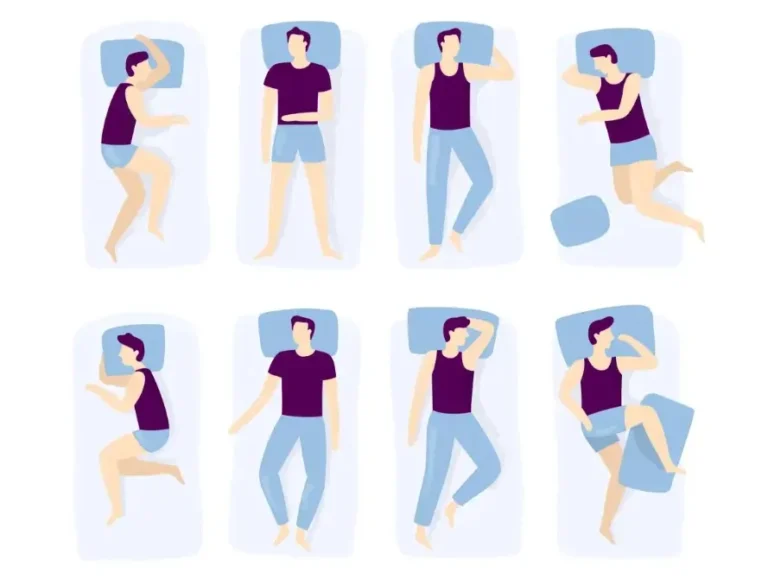Your sleeping position plays a key role in spinal health. Proper alignment can reduce discomfort, prevent long-term issues, and support overall well-being, while poor positions may cause back pain and disrupted sleep. This blog covers common sleeping positions, their impact on your spine, and tips for maintaining healthy posture while you rest.
Why Spinal Alignment Matters
Your spine performs a vital function in your body by keeping it upright, supporting movement, and protecting your central nervous system. When your spine is in alignment, all three natural curves (neck, mid-back, and lower back) are supported and balanced. This alignment reduces strain on the surrounding muscles, ligaments, and joints, minimizing discomfort and chronic pain.
However, when the spine is forced into unnatural positions during sleep, it can become misaligned. Over time, this misalignment can lead to several problems, including chronic back and neck pain, joint stiffness, interrupted sleep, and even poor posture during waking hours.
The Impact of Common Sleeping Positions
Each person gravitates toward a specific sleeping position, and some positions are better for spinal alignment than others. Here’s how these positions affect your spine.
Back Sleeping
The Pros:
Sleeping on your back is often considered the best position for maintaining spinal alignment. When lying on your back, your weight is distributed evenly across the body, and the spine follows its natural curves. This position reduces unnecessary pressure on your back and neck, making it an excellent option for people with lower back pain.
To improve this position further, place a small pillow under your knees. This helps maintain the natural curve of the lower back and reduces strain.
The Cons:
Back sleeping can sometimes lead to issues like snoring or sleep apnea, as the weight of your neck and tongue can obstruct the airway. If you experience these issues, consider switching to a different position or consult a healthcare provider for guidance.
Side Sleeping
The Pros:
Side sleeping is the most popular sleeping position and is considered great for spinal alignment when done correctly. This position can improve breathing, reduce snoring, and alleviate back and neck pain. Side sleeping is especially beneficial for people who suffer from sleep apnea or acid reflux.
For proper spinal alignment while sleeping on your side, keep your legs bent slightly at the knees and try placing a pillow between your knees. This small adjustment helps keep your hips, pelvis, and spine in alignment, preventing strain.
The Cons:
Without proper support, side sleeping can sometimes cause shoulder pain due to pressure on one side of the body. It may also lead to a misalignment of the spine if you curl into a tight fetal position. Stick to a neutral side position to avoid crunching your mid-body area, which can flatten the natural spinal curve.
Stomach Sleeping
The Pros:
Sleeping on your stomach can reduce snoring and alleviate mild cases of sleep apnea by keeping airways open. That said, these benefits are minimal when compared to the drawbacks of this position.
The Cons:
Stomach sleeping is often considered the worst position for spinal alignment. It forces your neck to twist to the side, leading to strain and stiffness over time. Additionally, stomach sleeping flattens the natural curve of your lower back, increasing strain on muscles and joints.
If you’re a stomach sleeper, try sleeping with a thin pillow (or no pillow at all) under your head to reduce strain on your neck. You may also consider transitioning to side or back sleeping for better spinal health.
Tips for Maintaining Proper Alignment While Sleeping
Regardless of your preferred sleeping position, these tips can help you maintain healthy spinal alignment and get more restful sleep.
Use the Right Pillow
Your pillow choice matters! It should support the natural curve of your neck and spine.
- Back sleepers: Opt for a thin, contoured pillow that supports the curve of your neck.
- Side sleepers: Choose a firmer pillow that fills the space between your neck and the bed.
- Stomach sleepers: Use a very thin pillow, or consider skipping one altogether, to minimize neck strain.
Invest in a Good Mattress
Your mattress plays a significant role in maintaining spinal alignment. A medium-firm mattress, such as a pillowtop king mattress, is generally recommended as it provides the right balance of support and comfort. Make sure the mattress keeps your spine aligned while allowing your shoulders and hips to sink slightly.
Add Supportive Accessories
- Place a pillow under your knees if you sleep on your back.
- Use a pillow between your knees if you sleep on your side.
- For stomach sleepers, a small pillow under your pelvis can reduce lower back pressure.
Stretch Regularly
Daily stretching exercises can improve overall spinal flexibility and counteract any strain caused by your sleeping position. Focus on stretches that loosen tight back, hip, and shoulder muscles.
Stay Consistent
Establishing a sleeping routine can also improve spinal health. Going to bed and waking up at the same time helps regulate your circadian rhythm, promoting deeper sleep and giving the body a chance to repair and recover naturally.
Listen to Your Body
Finding the right sleeping position may take some trial and error, but it’s worth investing the time to figure out what works best for you. Pay attention to how your body feels each morning. If you’re waking up with consistent aches or pain, it may be time to evaluate your sleeping habits, as well as your mattresses or pillows.
If discomfort persists, consult with a healthcare professional or chiropractor to assess your spinal health and explore solutions tailored to your needs.
Conclusion
Your sleeping position is more than just a comfort preference; it’s a vital factor in maintaining spinal health and overall well-being. Whether you sleep on your back, side, or stomach, taking steps to support spinal alignment can lead to better rest, reduced discomfort, and improved quality of life.
Also Read-The Ultimate Guide to Playtech Slots
